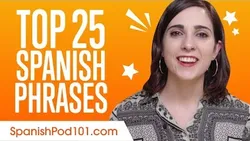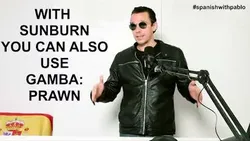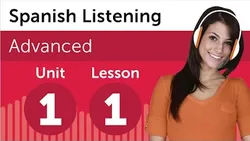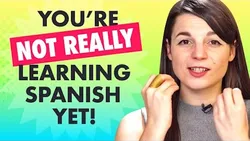
Spanish Vocabulary: Cultural Experience 
This course in the specialization will help learners build on their basic Spanish vocabulary and develop the skills to express their likes and dislikes in both oral and written form. Gain a cultural experience as you learn the language! ▼
ADVERTISEMENT
Course Feature
![]() Cost:
Cost:
Free
![]() Provider:
Provider:
Coursera
![]() Certificate:
Certificate:
No Information
![]() Language:
Language:
English
![]() Start Date:
Start Date:
Self Paced
Course Overview
❗The content presented here is sourced directly from Coursera platform. For comprehensive course details, including enrollment information, simply click on the 'Go to class' link on our website.
Updated in [March 06th, 2023]
This course in the specialization will build on the basic Spanish vocabulary learned in the first course. Students will develop the skills necessary to express their likes and dislikes orally and in writing. Additionally, they will explore the common cultural experiences of the Spanish-speaking world through a visit to the marketplace. Interactive activities and videos will provide opportunities for practice and continued exploration of the cultural context of the Spanish-speaking world.
[Applications]
Upon completion of this course, students should be able to apply their knowledge of Spanish vocabulary and cultural experiences to their everyday lives. They should be able to communicate their likes and dislikes in Spanish, as well as understand the cultural context of the Spanish-speaking world. Additionally, students should be able to use the interactive activities and videos to continue to explore the cultural context of the Spanish-speaking world.
[Career Paths]
1. Spanish Translator: Spanish translators are responsible for translating written and spoken Spanish into another language. They must have a strong command of both languages and be able to accurately convey the meaning of the original text. The demand for Spanish translators is increasing due to the growing number of Spanish-speaking immigrants in the United States and other countries.
2. Spanish Teacher: Spanish teachers are responsible for teaching Spanish language and culture to students of all ages. They must have a strong command of the language and be able to effectively communicate with their students. Spanish teachers must also be knowledgeable about the culture of the Spanish-speaking world and be able to provide students with a comprehensive understanding of the language and culture.
3. Spanish Interpreter: Spanish interpreters are responsible for interpreting spoken Spanish into another language. They must have a strong command of both languages and be able to accurately convey the meaning of the original text. The demand for Spanish interpreters is increasing due to the growing number of Spanish-speaking immigrants in the United States and other countries.
4. Spanish Content Writer: Spanish content writers are responsible for creating content in Spanish for websites, blogs, and other digital media. They must have a strong command of the language and be able to effectively communicate with their audience. Spanish content writers must also be knowledgeable about the culture of the Spanish-speaking world and be able to provide readers with a comprehensive understanding of the language and culture.
[Education Paths]
1. Bachelor of Arts in Spanish: This degree program provides students with a comprehensive understanding of the Spanish language, culture, and literature. Students will learn about the history and development of the language, as well as its various dialects. They will also gain an understanding of the culture and literature of the Spanish-speaking world. This degree is becoming increasingly popular as more people are interested in learning about the language and culture of the Spanish-speaking world.
2. Master of Arts in Spanish: This degree program provides students with an advanced understanding of the Spanish language, culture, and literature. Students will learn about the history and development of the language, as well as its various dialects. They will also gain an understanding of the culture and literature of the Spanish-speaking world. This degree is becoming increasingly popular as more people are interested in learning about the language and culture of the Spanish-speaking world.
3. Doctor of Philosophy in Spanish: This degree program provides students with an in-depth understanding of the Spanish language, culture, and literature. Students will learn about the history and development of the language, as well as its various dialects. They will also gain an understanding of the culture and literature of the Spanish-speaking world. This degree is becoming increasingly popular as more people are interested in learning about the language and culture of the Spanish-speaking world.
4. Certificate in Spanish: This certificate program provides students with a basic understanding of the Spanish language, culture, and literature. Students will learn about the history and development of the language, as well as its various dialects. They will also gain an understanding of the culture and literature of the Spanish-speaking world. This certificate is becoming increasingly popular as more people are interested in learning about the language and culture of the Spanish-speaking world.
Course Provider

Provider Coursera's Stats at AZClass
Spanish Vocabulary: Cultural Experience will help learners build basic Spanish vocabulary and develop the skills to express their likes and dislikes orally and in writing. Learners build on the basic vocabulary learned in the first course and develop the skills to express their likes and dislikes orally and in writing. Through interactive activities and videos, learners can explore common cultural experiences in the Spanish-speaking world, such as visiting a market. Learners can practice and further explore the cultural context of the Spanish-speaking world through lesson activities and videos.
Discussion and Reviews
0.0 (Based on 0 reviews)
Explore Similar Online Courses

Managing Mental Health and Stress

Spanish Words for Every Day

Python for Informatics: Exploring Information

Social Network Analysis

Introduction to Systematic Review and Meta-Analysis

The Analytics Edge

DCO042 - Python For Informatics

Causal Diagrams: Draw Your Assumptions Before Your Conclusions

Whole genome sequencing of bacterial genomes - tools and applications

Spanish tutorials & lessons for beginners

Spanish Listening Comprehension for Advanced Learners


Start your review of Spanish Vocabulary: Cultural Experience